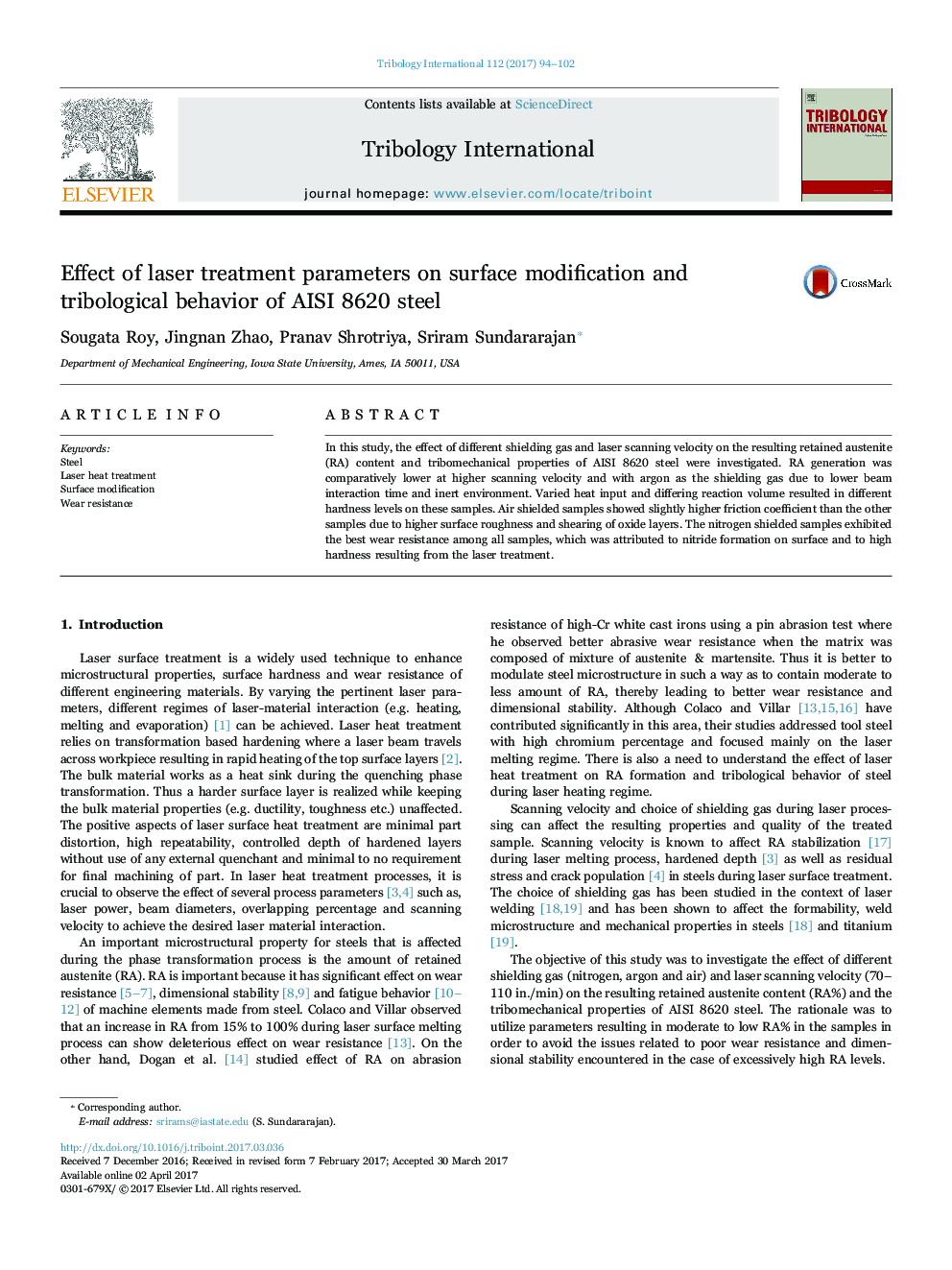| Article ID | Journal | Published Year | Pages | File Type |
|---|---|---|---|---|
| 4985962 | Tribology International | 2017 | 9 Pages |
Abstract
In this study, the effect of different shielding gas and laser scanning velocity on the resulting retained austenite (RA) content and tribomechanical properties of AISI 8620 steel were investigated. RA generation was comparatively lower at higher scanning velocity and with argon as the shielding gas due to lower beam interaction time and inert environment. Varied heat input and differing reaction volume resulted in different hardness levels on these samples. Air shielded samples showed slightly higher friction coefficient than the other samples due to higher surface roughness and shearing of oxide layers. The nitrogen shielded samples exhibited the best wear resistance among all samples, which was attributed to nitride formation on surface and to high hardness resulting from the laser treatment.
Related Topics
Physical Sciences and Engineering
Chemical Engineering
Colloid and Surface Chemistry
Authors
Sougata Roy, Jingnan Zhao, Pranav Shrotriya, Sriram Sundararajan,
